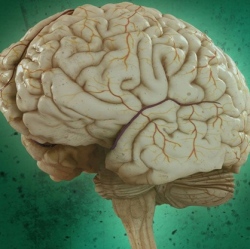
The hippocampal CA3 region is known to play a key role in learning and memory. One of the most remarkable properties of the network is its ability to retrieve previously stored memories from incomplete or degraded versions, a phenomenon that is widely known as pattern completion.
It is widely accepted that the synapses between CA3 pyramidal cells, the recurrent CA3–CA3 synapses, play a key role in pattern completion, but how this exactly works is still a mystery.
Now, in recent research published in the journal Science, neuroscientists Jose Guzman, Alois Schlögl, Michael Frotscher, and Peter Jonas have investigated these mechanisms by combining functional connectivity analysis and network modeling. Their findings suggest that the rules of synaptic connectivity between CA3 pyramidal cells contribute to the remarkable efficiency of pattern completion.
Previous theories of the hippocampal formation often depicted the region as a network of highly interconnected cells. The neuroscientists from the Institute of Science and Technology Austria (IST Austria) tested this hypothesis using a technique that allows monitoring the connection between electrical signals in up to eight neurons at the same time.
They made several highly surprising observations. First, they found that connectivity was sparse, with an average connection probability of approximately 1%. This massively challenges the dogma of a network of highly connected cells. Even more surprisingly, they discovered that connectivity in the network is not random, but exhibits connectivity motifs that occur much more frequently than expected for a random network.
The structure of the hippocampal CA3 network may be somewhat reminiscent of a “small world” architecture as found in social networks. Finally, the authors revealed that synaptic connections between two cells are mediated by only one or two synaptic contacts. This is also remarkable because much higher numbers have been found for excitatory synaptic connections in the neocortex.
What did these ‘rules’ mean for memory formation? To address this question, Jonas,who leads the cellular neuroscience group and his team built a model of the CA3 network that incorporates many of these new experimental observations. In contrast to many previous studies, the network was implemented in full size, so that all 330,000 CA3 neurons of the rat hippocampus were simulated.
They found that a full-size network model with realistic connectivity of 1% was indeed able to perform the network computation of pattern completion. Also, they discovered that the presence of connectivity motives increased, under certain conditions, the performance of the network. Finally, the design of synaptic connections based on one or two synaptic contacts also seems useful for pattern completion, apparently because it minimizes redundancy in the flow of information in the network.
For the researchers, both macro- and microconnectivity facilitate pattern completion in the CA3 cell network. “The results provide a nice demonstration of how the Hopfield quote “build it, and you understand it” can be successfully applied to important questions in neuroscience,” states Jonas.
